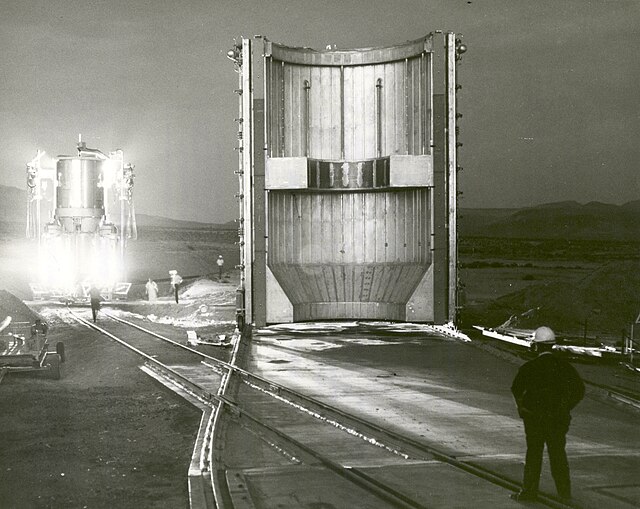A nuclear thermal rocket (NTR) is a type of thermal rocket where the heat from a nuclear reaction replaces the chemical energy of the propellants in a chemical rocket. In an NTR, a working fluid, usually liquid hydrogen, is heated to a high temperature in a nuclear reactor and then expands through a rocket nozzle to create thrust. The external nuclear heat source theoretically allows a higher effective exhaust velocity and is expected to double or triple payload capacity compared to chemical propellants that store energy internally.
1 December 1967: The first ground experimental nuclear rocket engine (XE) assembly is shown here in "cold flow" configuration, as it makes a late evening arrival at Engine Test Stand No. 1 in Jackass Flats, Nevada. The engine is in the left background with a shield structure in the mid/foreground.
A NERVA solid-core design
Pulsed nuclear thermal rocket unit cell concept for Isp amplification. In this cell, hydrogen-propellant is heated by the continuous intense neutron pulses in the propellant channels. At the same time, the unwanted energy from the fission fragments is removed by a solitary cooling channel with lithium or other liquid metal.
The KIWI A prime nuclear thermal rocket engine
Rocket propellant is the reaction mass of a rocket. This reaction mass is ejected at the highest achievable velocity from a rocket engine to produce thrust. The energy required can either come from the propellants themselves, as with a chemical rocket, or from an external source, as with ion engines.
A Delta IV Heavy during liftoff. The rocket is entirely fuelled with liquid hydrogen and liquid oxygen cryogenic propellants.





